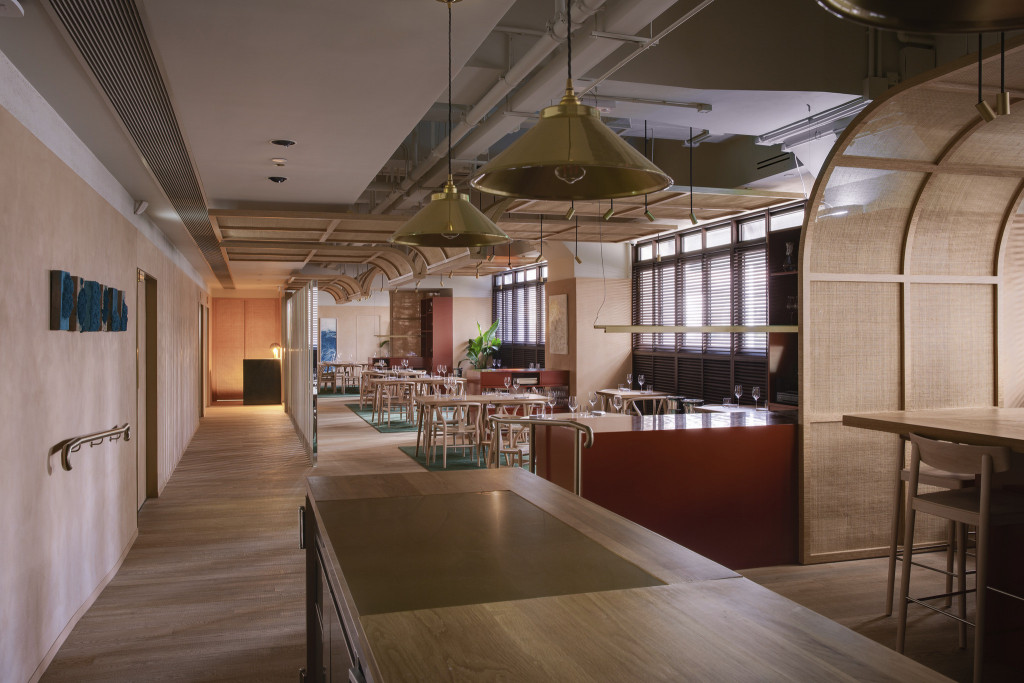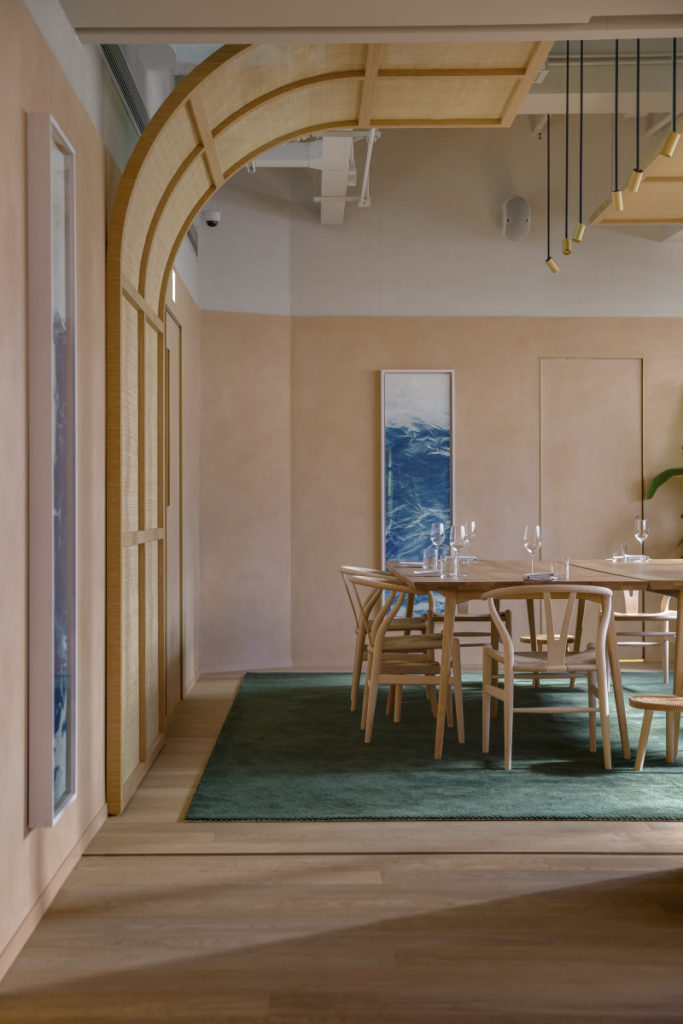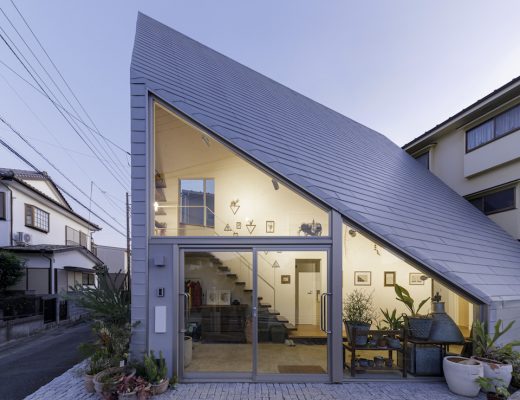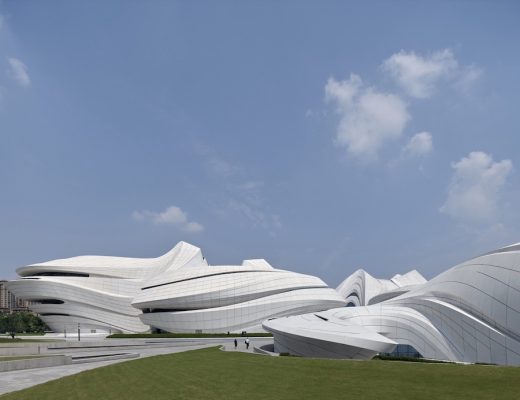In the bustling central district of Hong Kong, the Snohetta-designed Whey restaurant manifests itself as a calm escape from the hustle and bustle of the concrete jungle surrounding it. The 336m2 restaurant intersects European and Asian cuisine in an eclectic space inspired by Scandinavian folk art, Peranakan architecture, and art, paying homage to the Singaporean cultural scene. With Singaporean chef Barry Quek at the helm, Whey seeks to introduce diners to modern European cuisine, reimagined with Singaporean influences, with a focus on local and seasonable ingredients. Hong Kong-based ZS Hospitality Group – known among others for the two Michelin starred Ying Jee Club and modern Korean restaurant Hansik Goo – commissioned Snøhetta has created the interior design and the visual identity for Whey.
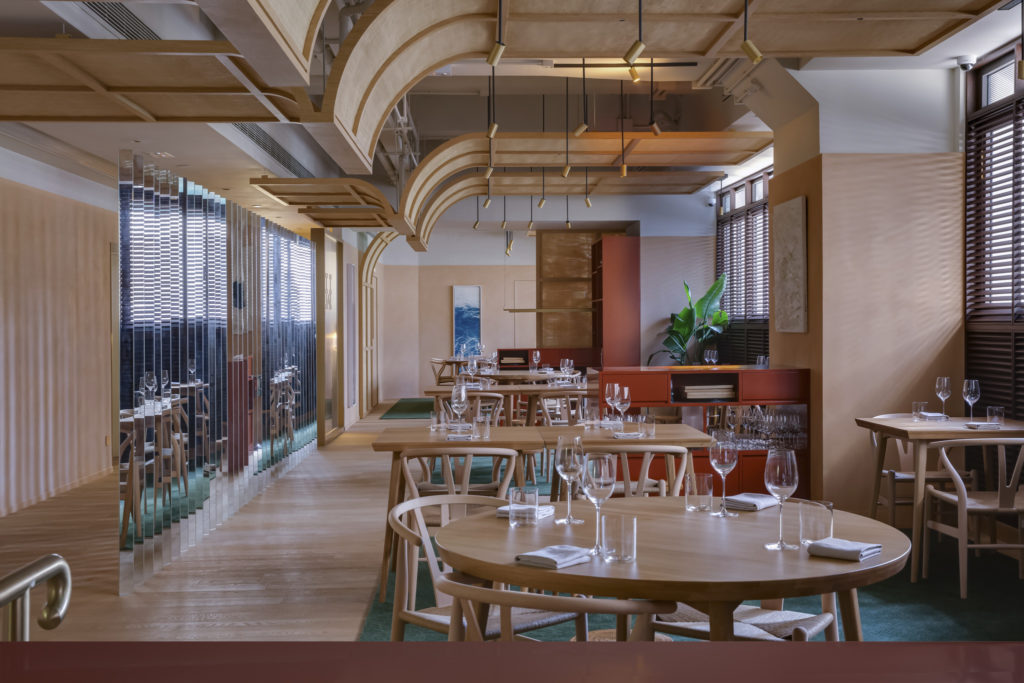
A visit to Whey is designed as a procession through the different courses of a meal. The entrance’s vestibule guides guests through a long corridor, building anticipation, before arriving at the Chef’s table. The linear arrival portal is separated from the main space with a folded mirror installation by Singaporean artist Dawn Ng – a piece exploring notions of time, space and self. The art piece acts as a wind-down from the busy streets outside. The open plan is clearly divided by columns into four bays. The first is an open kitchen dining area, where guests can directly interact with the chef. It overlooks the two main dining bays, and a final dining bay in the back of the space can be partitioned off as a Chambre Séparée (separate chamber).
The space is characterised by an interplay of hues ranging from warm, earthy tones to deep, tropical greens, with brass details. The colour palette is reminiscent of the rustic Scandinavian cabins and the abundant green of tropical Singapore, with a touch of polished refinement.
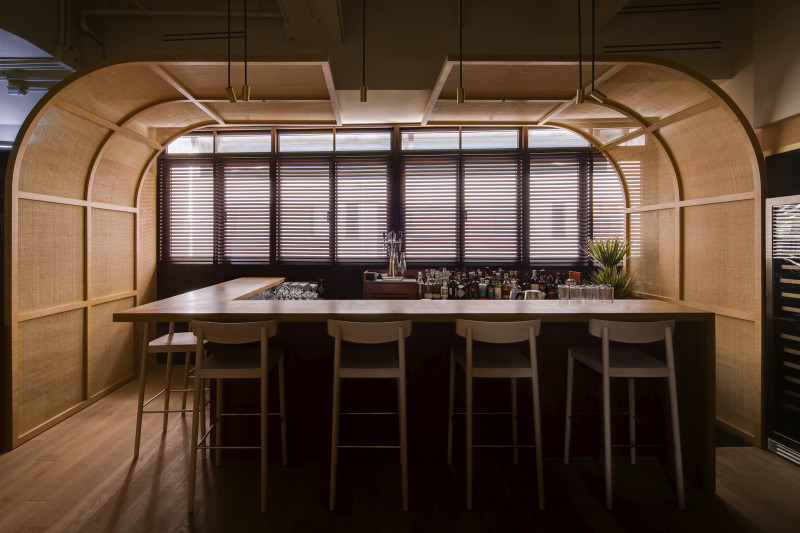
The harmoniously contrasted space is reinforced by the material selection. Rattan, commonly used in both Singaporean and Scandinavian design elements, brings a softness to the space with its woven texture, while also functioning as a visual veil and acoustic damper. Natural stained oak on floors, tables and screens, brings tactility to the dining experience while emphasizing the contrast to concrete exteriors of the city. Lastly, to bring temporal and visual depth to the more intimate spaces, a deep green marble is used in the reception area and bathrooms, contrasting the otherwise bright open-plan interior.
Collaborations with local businesses has also been key in the design. Custom wooden dining tables by Sprue Bespoke Furniture and a ceramic tableware collection by FlowPlusLiving brings a piece of Hong Kong to the space. Building on local footprint, the eatery is filled with carefully curated art pieces by international artists including Bosco Sodi from Mexico, Wu Chu-Tsung from Taiwan and Jiana Kim from Korea.
Photos: Snohetta
You might also like:
A new sculptural installation by Paul Cocksedge livens up a Hong Kong neighbourhood

